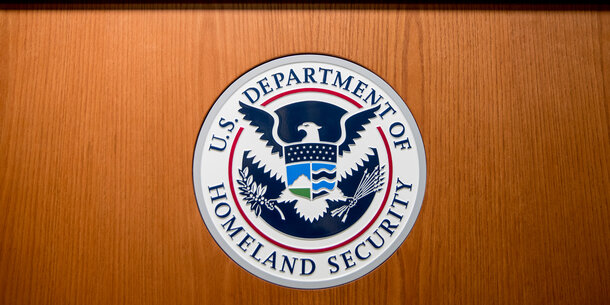Evaluating the Failures of Exposure Notification Apps
The apps were once seen as a pandemic game-changer, but low adoption rates have undermined their efficacy.

Covid-19 exposure notification apps were touted as a tool that could help turn the tide of the pandemic. However, the apps have failed to achieve their full potential in the United States, where they generally have extremely low utilization rates. Now, as digital vaccine credentials are being rolled out across the country, there are valuable lessons to be learned from what happened with notification apps regarding user privacy and efficacy.
Exposure notification apps were supposed to slow the spread of Covid-19 and help communities emerge from lockdowns. Most state apps are built on the Google/Apple platform and designed to supplement manual contact tracing by utilizing Bluetooth technology in cell phones to notify people who may have been exposed to the virus. Users who test positive for Covid-19 input a code into the app so that anonymous notifications can be sent to the devices of those they have been in proximity to.
By most accounts, these apps overpromised and underdelivered. Their public health benefits are directly linked to uptake levels — the more people who use the apps, the greater the potential reduction in Covid-19 cases and hospitalizations. However, almost a year after their launch, low adoption rates continue to undermine the apps’ efficacy. For instance, according to a survey of state health departments, Arizona ended its digital contact tracing program in July after just 1.3 percent of the state’s population installed Covid Watch Arizona, and less than 1 percent of the population in Wyoming has downloaded the state’s Care19 app.
Even in states with higher participation rates, the percentage of people logging positive Covid-19 cases into the apps remains extremely low. New Jersey and New York report that approximately 28 percent and 36.5 percent of residents have installed their respective exposure notification apps, yet just 0.25 percent and 1.73 percent of positive cases, respectively, were being logged as of late August.
Other countries have not faced the same problems. More than 40 percent of the weekly cases in the U.K. are reported through the government app, as compared to the approximately 2 percent of Covid-19 cases logged across the 17 U.S. states and the District of Columbia that participated in a survey.
The poor usage rates in the United States can be attributed to a multitude of factors, but two consistent themes have emerged: many Americans are concerned about the apps’ privacy protections and are skeptical of their efficacy. An online survey from June 2020 found that 71 percent of Americans did not plan on downloading an exposure notification app, with the primary reason given being concerns about digital privacy. Another poll found that Americans are more worried about digital contact tracing than other forms of public health surveillance, including traditional contact tracing. Meanwhile, Cornell University researchers reported that support among Americans for digital contact tracing increases with stronger privacy protections.
If Americans’ concerns about privacy resulted in decreased participation in the exposure notification apps, it also undermined their usefulness. For example, some frontline workers who downloaded an app and then had direct contact with Covid-19 patients reported being frustrated that they never received a notification through the app. Meanwhile, because of low uptake rates, people who tested positive for Covid-19 often felt the need to manually inform recent contacts rather than rely on the apps to notify those they might have exposed.
It is also likely that trust in the state-run exposure notification apps — and a willingness to adopt any Covid-19 mitigation measures — has been impacted by broader partisan debates about the government’s handling, and the severity or very existence, of the pandemic. Over the last year, disagreements about shutdowns, social distancing, masks, vaccine mandates, and whether the country should prioritize stopping Covid-19 or restarting the economy have intensified. These issues also played an outsize role in shaping recent elections. While Americans across both parties have expressed concerns about misinformation, polls have shown that the perceived trustworthiness of information from both the White House and the media deeply is divided along party lines. In this environment, the government-administered apps face an uphill battle in winning over a skeptical public.
In addition to politics and privacy and efficacy concerns, accuracy issues, notification delays, inadequate advertising, and a lack of coordination by the federal regime also likely played a role in depressing participation rates, along with the fact that 15 percent of adult Americans do not own a smartphone. Covid fatigue has also set in for many Americans who have had to navigate changing advice and judgment calls as health professionals grappled with a new virus, as well as the highs and lows of increased vaccine availability, new surges, and variants.
In all, it was an expensive experiment — state governments spent millions of dollars and devoted significant public health resources to developing and marketing the apps, which ultimately have played a limited role in arresting the spread of the virus. The situation cautions us to avoid technological solutions in the context of Covid-19 and beyond. In the event that technology does have a role to play, it is important to take the time to properly vet and develop tools that are privacy-protective and effective.
The failures of the exposure notification apps counsel us to be proactively privacy-protective and transparent when it comes to digital vaccine credentials, which we examine here. The challenges posed by partisan disagreements about Covid-19 and the equity issues raised by reliance on digital systems, particularly for those without smartphones, also need to be addressed. Finally, to forestall the prolonged debates about efficacy and privacy that have eroded public trust in the exposure notification apps, it is imperative that governments prioritize user privacy and ensure user data is secure before they are released.





